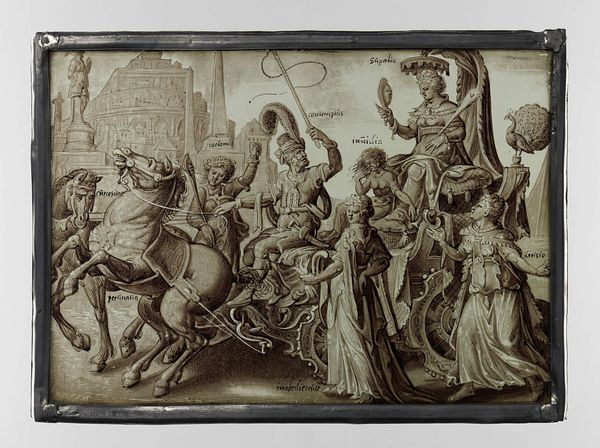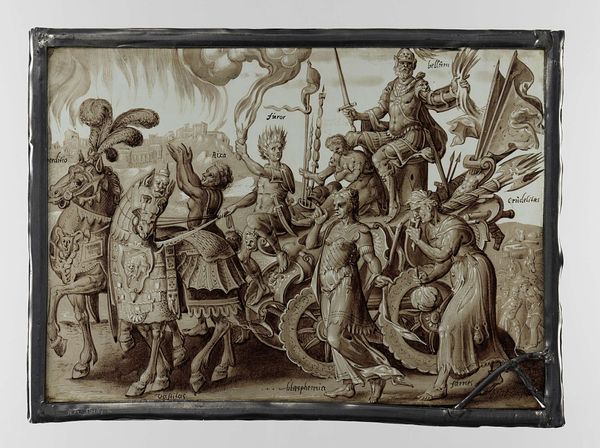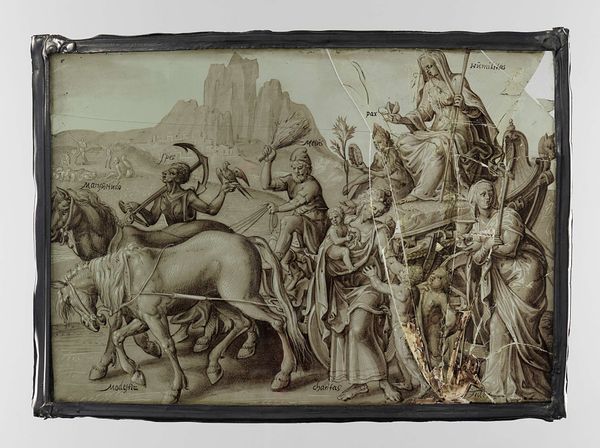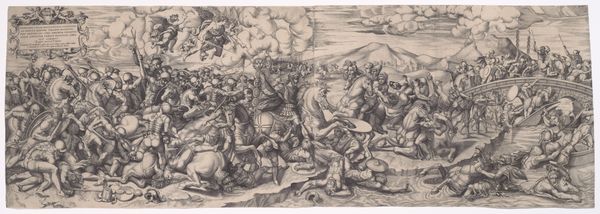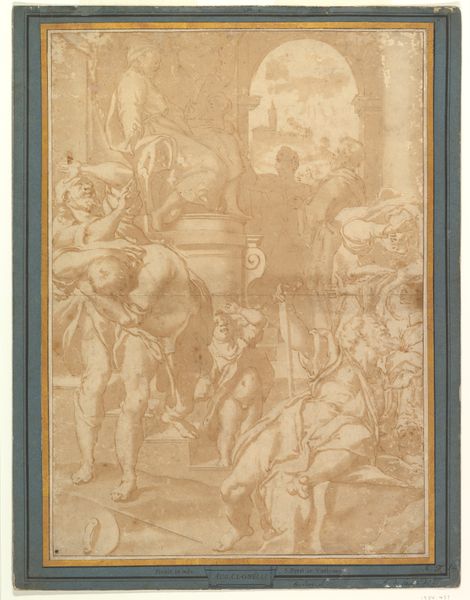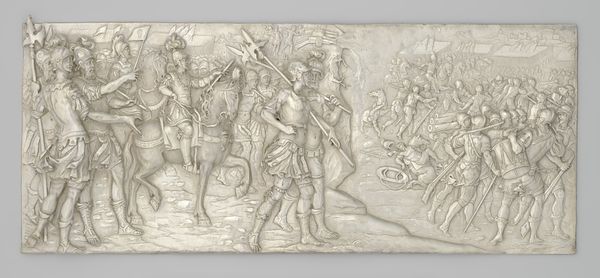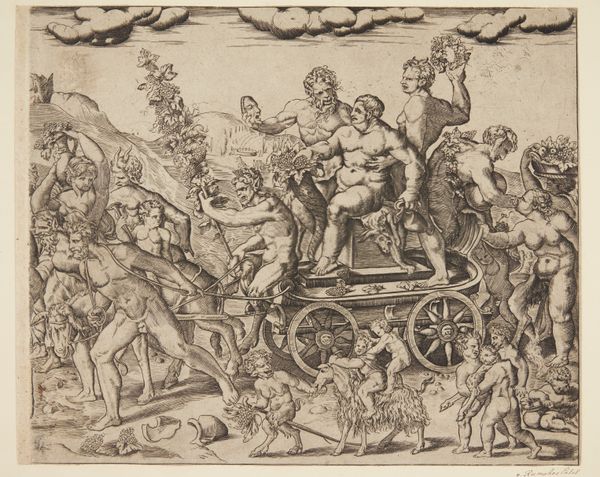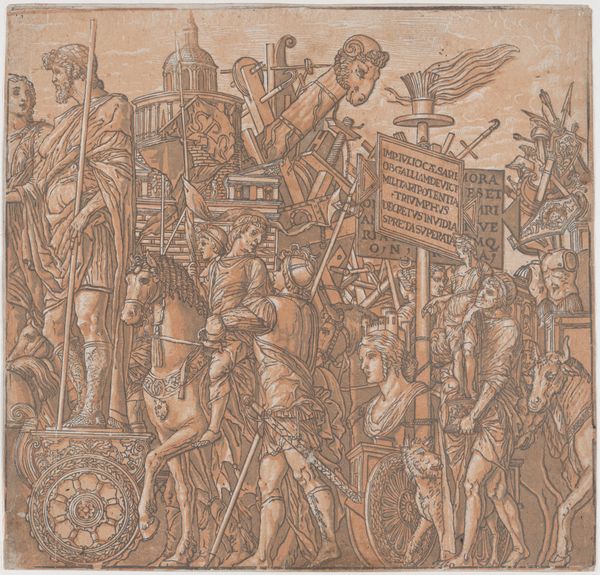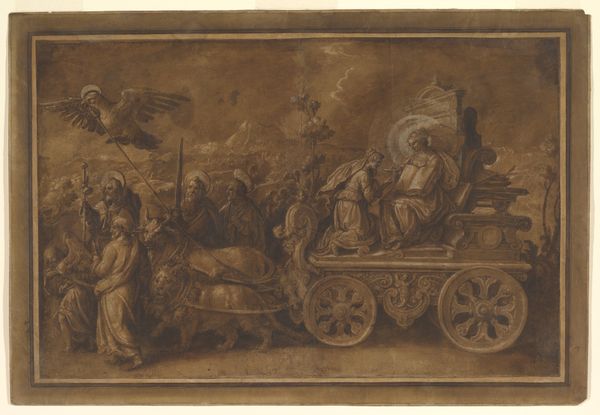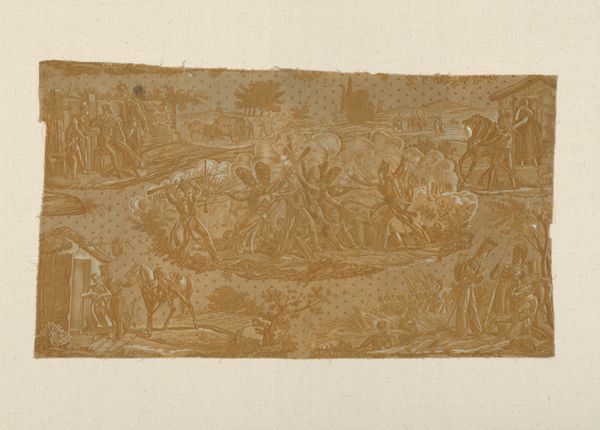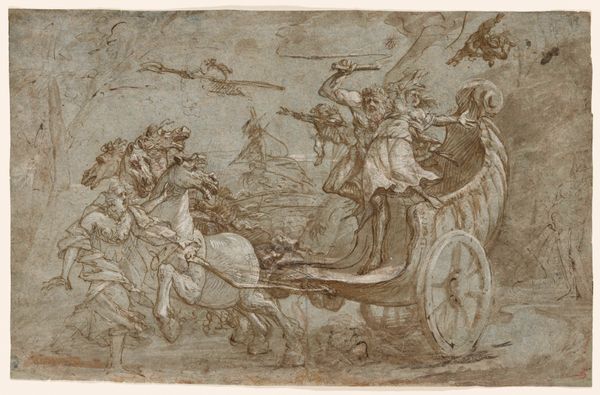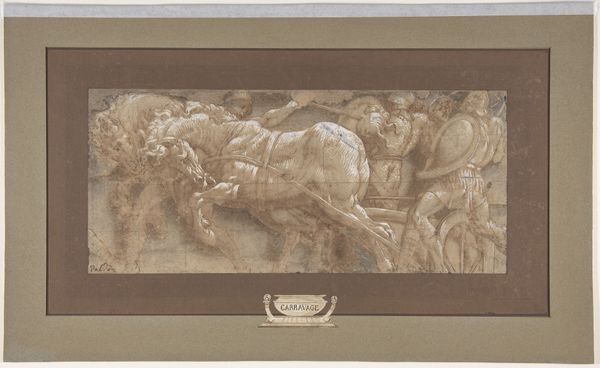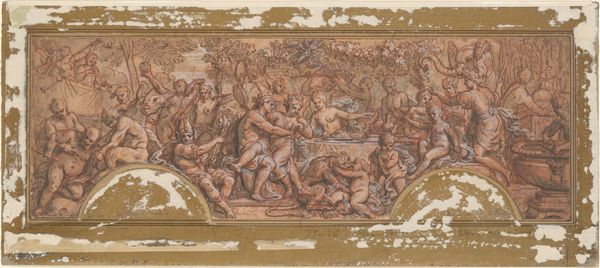
print, engraving
#
allegory
# print
#
charcoal drawing
#
mannerism
#
figuration
#
11_renaissance
#
geometric
#
line
#
history-painting
#
engraving
Dimensions: height 20.5 cm, width 27.9 cm
Copyright: Rijks Museum: Open Domain
Curator: This print, "Ruit met De Triomf van de Vrede (Pax)," was created anonymously sometime between 1564 and 1600. It's currently held here at the Rijksmuseum. An engraving, we see a complex allegorical scene unfold, rendered in precise detail. Editor: It’s rather… stark. Almost unsettling in its clarity. Despite the title invoking peace, the composition feels dynamic, even agitated. I'm struck by the contrasting elements vying for attention within the frame. Curator: Absolutely. Looking closely, we can examine the deliberate choices in the printmaking process. The sharp lines were etched with care into the copperplate, and this enabled the creation of multiple impressions. These kinds of prints became a vital tool for disseminating ideas and visual culture across Europe during this time, allowing the motif of peace to be materially distributed on a mass scale. Editor: And it's not simply peace; it’s the *triumph* of peace. This triumph feels deliberately constructed, almost propagandistic. Consider the central figure of Pax, or Peace, enthroned on her chariot. She is accompanied by a retinue of figures – Veritas, Diligentia, Justitia. They're labeled explicitly, part of an elaborate symbolic structure of the ideal moral order, seemingly riding roughshod over something less ideal… possibly the religious and political discord of the late Renaissance. Curator: Yes, and notice the emphasis on labor. We see the clear labor involved in creating this, but also the implied labour on the viewer's part, with that almost diagrammatic labelling prompting a considered intellectual consumption. Furthermore, that dissemination would rely upon other labour; the printers, the merchants, the individuals transporting and consuming them... Editor: Exactly, all that labour tied to the material’s ability to be remade over and over to spread the artist's idea. And to consider the work today is to wonder whether the ideal that it is based upon actually has the intended effect, and how our reading of peace might conflict or change depending on historical context and audience. The figure of Justitia, or Justice, for instance, seems almost severe, bearing a sword and blindfold. Curator: Indeed. The combination of traditional skills alongside innovative practices offers such great insight to workshop cultures, the history of publishing and other allied trades and even distribution networks that helped to produce and sell works such as this. Editor: For me, this engraving is a potent reminder that even in art that promises peace, we must look closely, be critical, and acknowledge the underlying narratives about the world and the ideologies and powers embedded within. Curator: A fascinating balance of artistic intent and the broader socio-economic picture. Thank you for that critical framework.
Comments
No comments
Be the first to comment and join the conversation on the ultimate creative platform.
